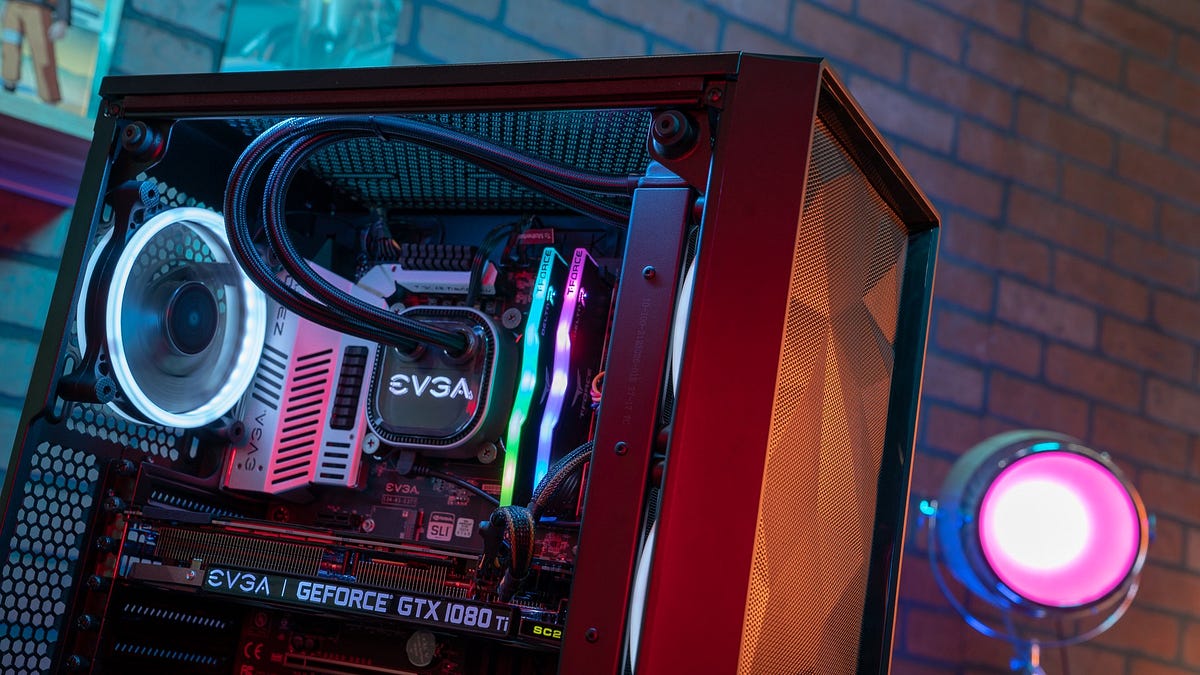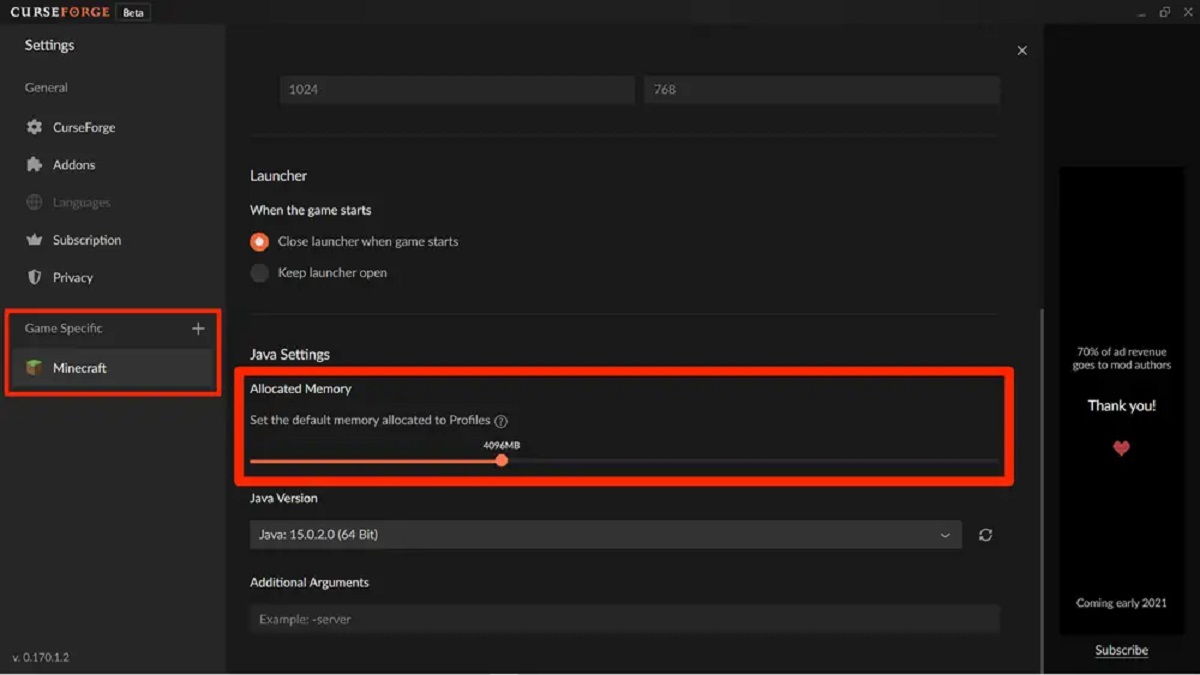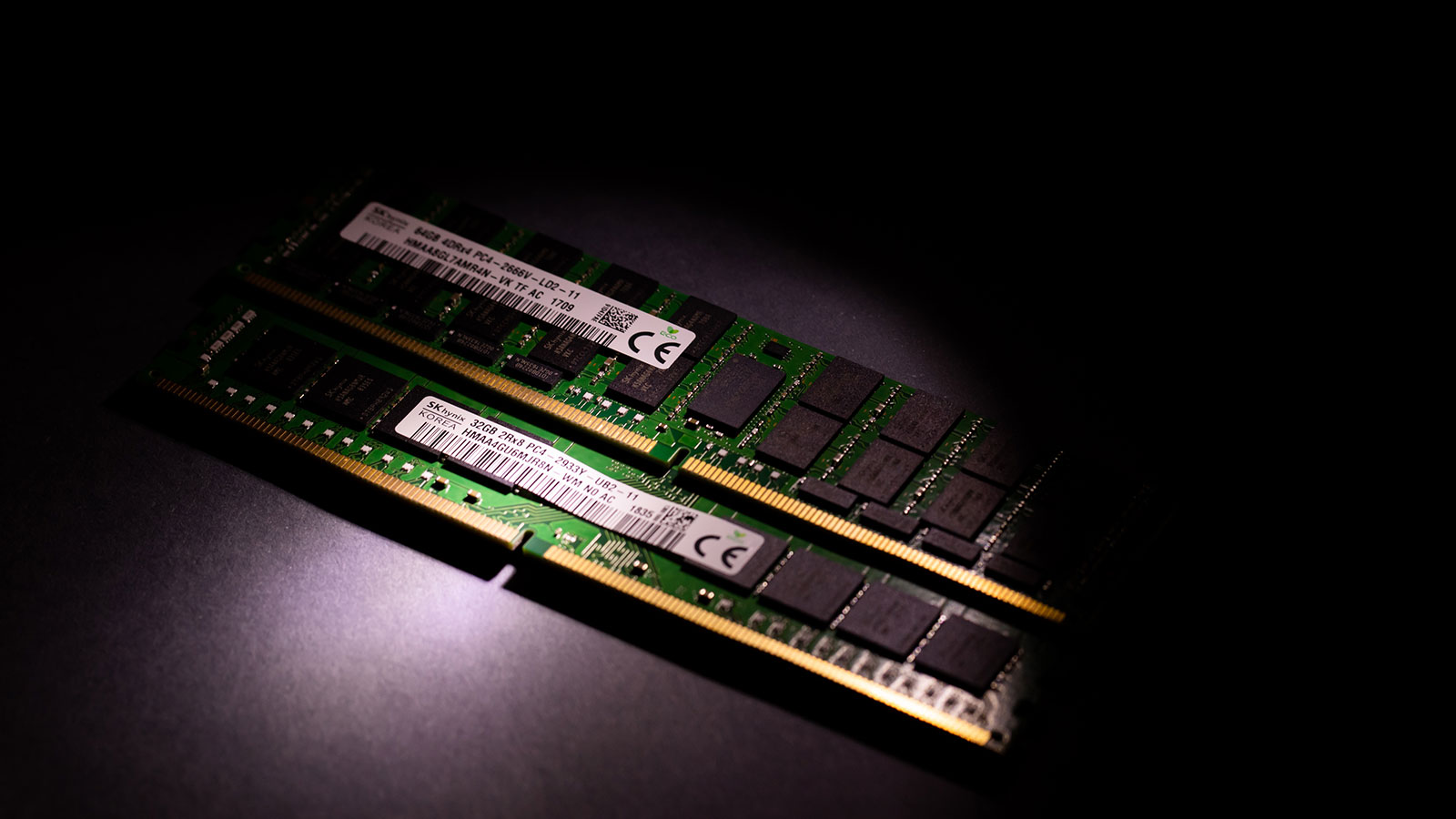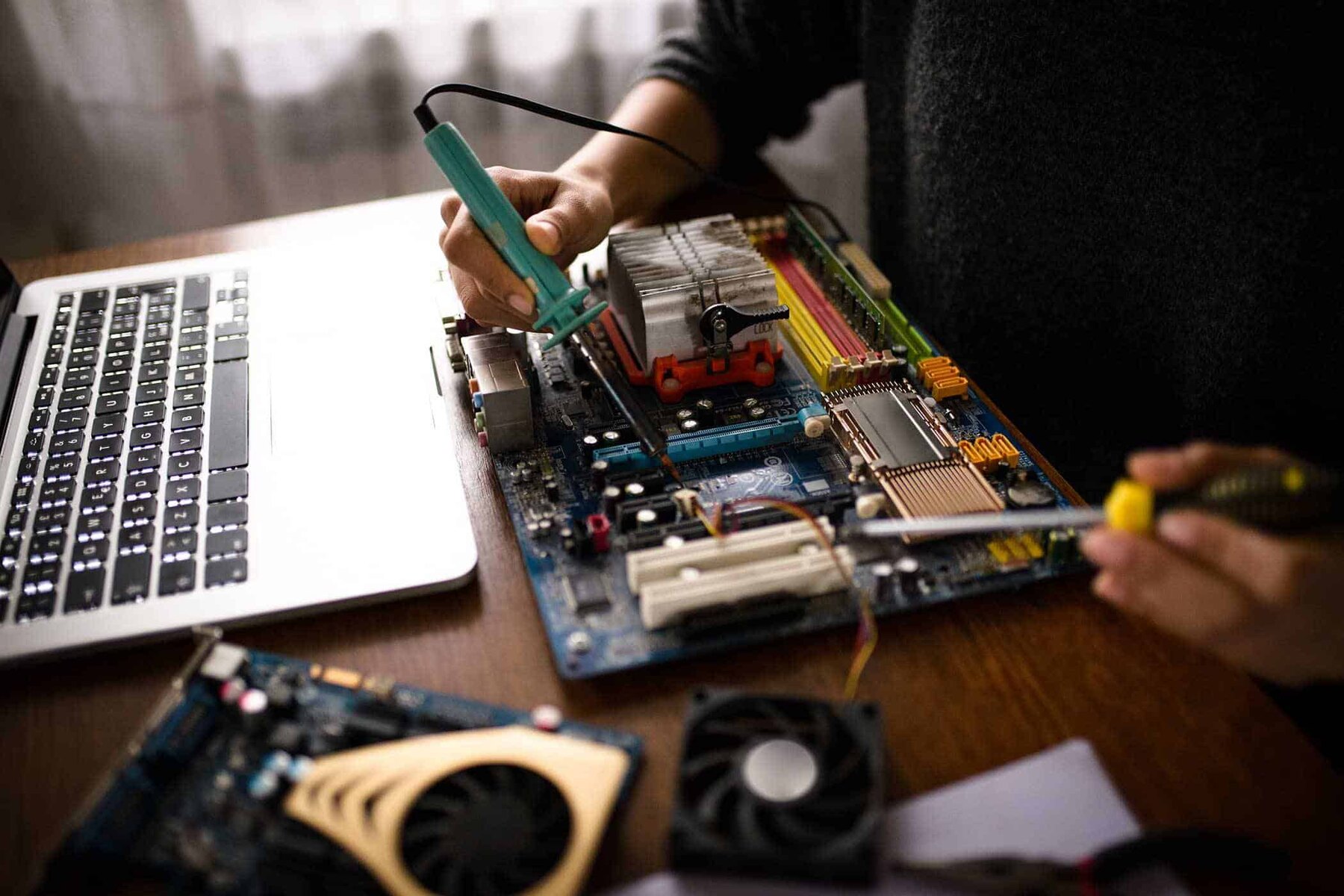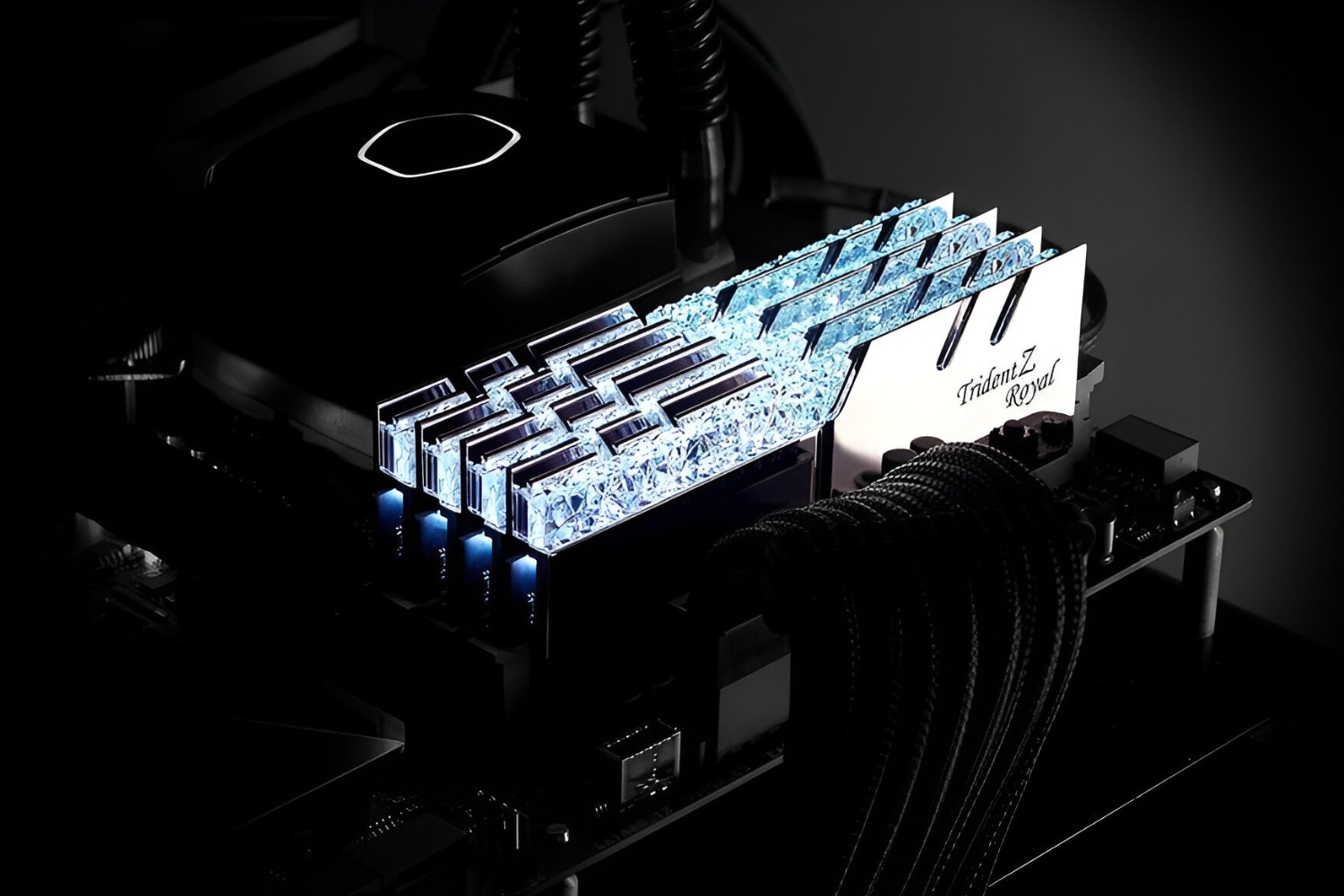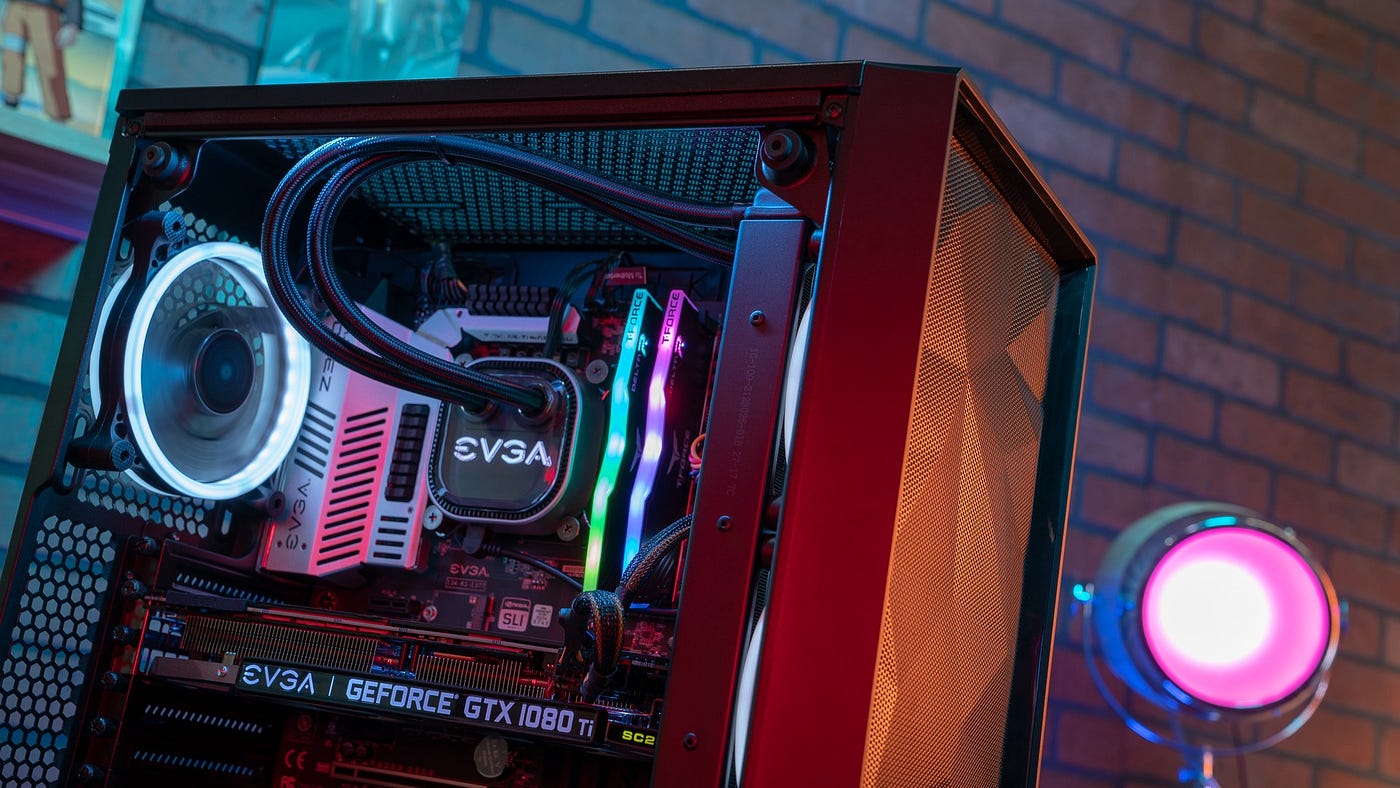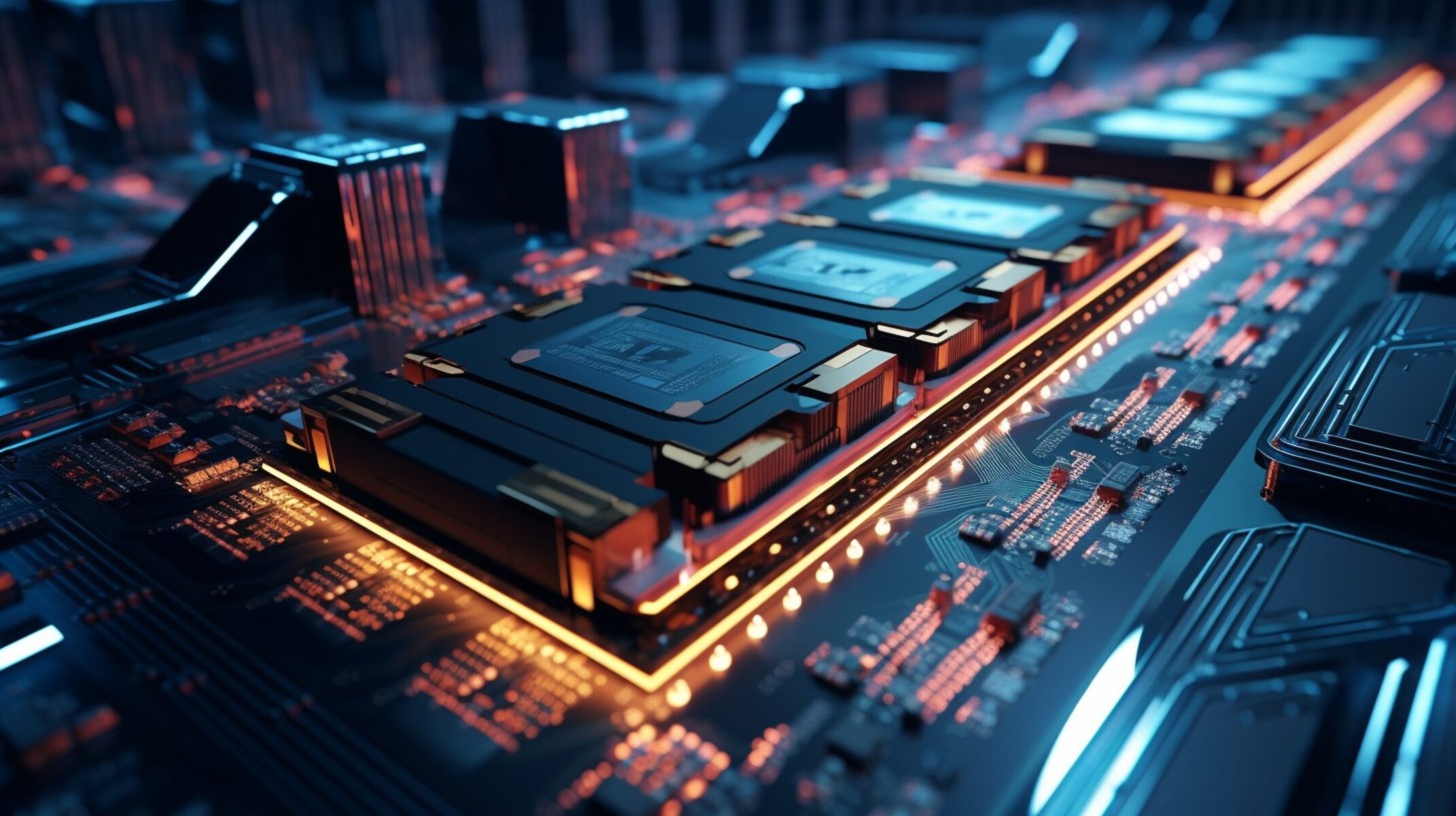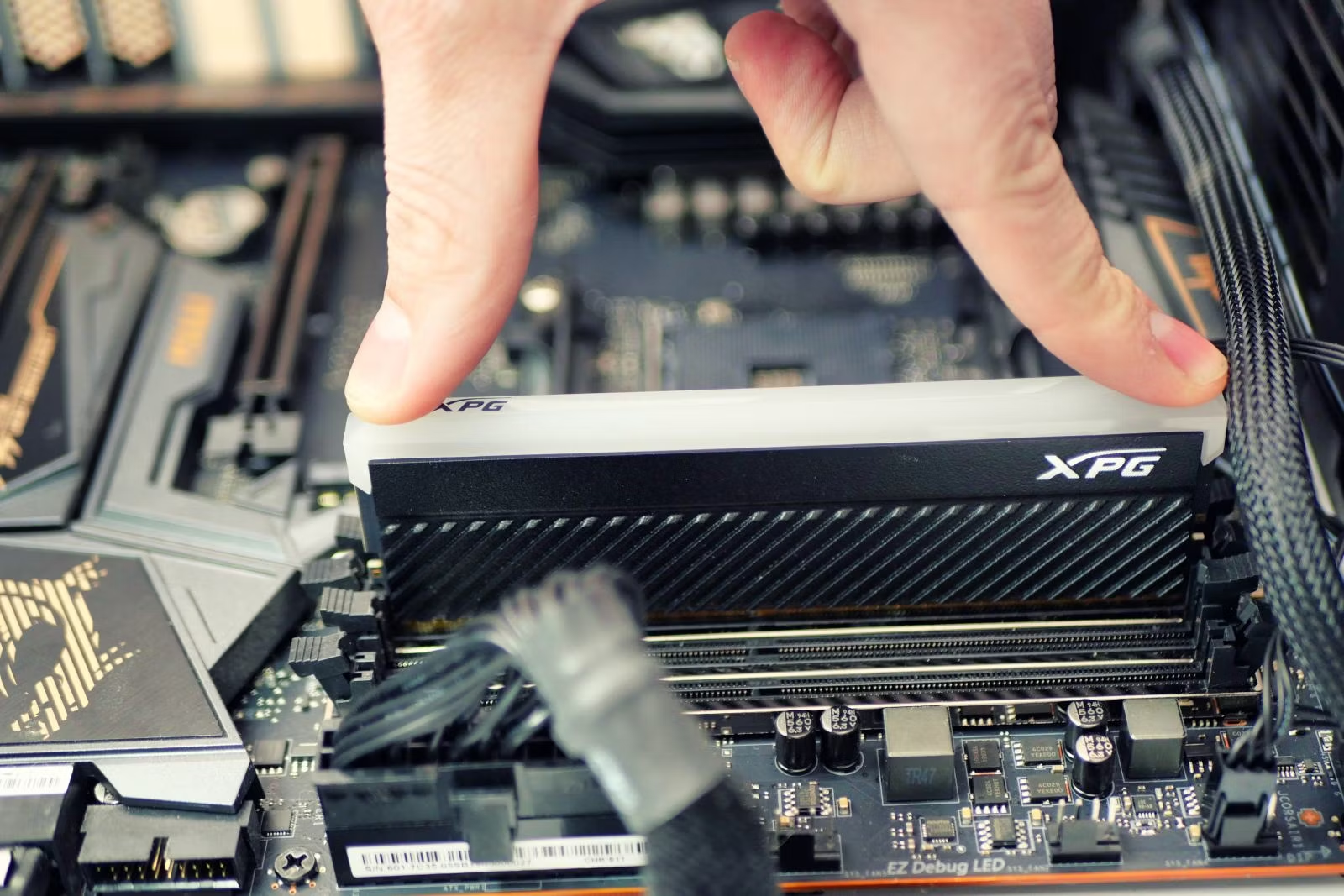Introduction:
When it comes to choosing the right computer, there are numerous factors to consider. One crucial component that plays a vital role in determining the performance and speed of your system is RAM, which stands for Random Access Memory. RAM is essentially the temporary storage space where your computer actively runs programs and processes data.
Having an adequate amount of RAM is crucial for ensuring smooth multitasking, efficient program execution, and overall system responsiveness. However, determining the recommended amount of RAM can be a bit challenging, as it depends on various factors such as the type of tasks you perform on your computer, the operating system you’re using, and the specific software or applications you frequently use.
In this article, we will delve into the world of RAM and discuss the factors that affect the recommended amount of RAM for different computer tasks. Whether you’re a gamer, a creative professional, or a programmer, we’ll provide you with some guidance on how much RAM you typically need to ensure optimal performance.
What Is RAM?
RAM, or Random Access Memory, is a crucial component of a computer system that allows for temporary storage and quick access to data that the system actively uses. Think of it as your computer’s short-term memory, where it stores information that is currently being processed or executed by programs and the operating system.
Unlike a hard drive or solid-state drive (SSD), which provide permanent storage for your files and data, RAM is volatile memory, meaning that the data stored in it is lost when the computer is powered off. This volatility allows for fast read and write speeds, enabling your computer to quickly access and manipulate data without the need to wait for it to be retrieved from a hard drive.
RAM is used by the computer to store not only program instructions but also the data that those programs need to access for processing. For example, when you open a web browser, the browser’s program code is loaded into RAM, as well as the webpage data that is being displayed on your screen. The more RAM your computer has, the more data it can store and access quickly, resulting in improved system performance.
In addition to the amount of RAM your computer has, the speed of the RAM modules, measured in megahertz (MHz), is also important. Faster RAM modules allow for quicker data transfer between the RAM and other components, further enhancing system performance. However, it’s essential to note that the speed of the RAM must be compatible with the motherboard’s specifications to ensure proper functioning.
Overall, RAM plays a vital role in the efficient operation of your computer, allowing for smooth multitasking, faster program execution, and improved system responsiveness. The recommended amount of RAM depends on various factors, such as the specific tasks you perform on your computer, the operating system requirements, and the software you use. In the following sections, we will explore these factors in more detail and provide recommendations for different computer tasks.
Why Is RAM Important?
RAM, or Random Access Memory, plays a crucial role in the overall performance and speed of your computer. It is an essential component that directly affects how efficiently your computer can handle tasks and run applications. Here are some key reasons why RAM is important:
1. Improved Multitasking: RAM allows your computer to handle multiple tasks simultaneously. When you have more RAM, your computer can store and quickly access the data needed for different programs and processes. This enables smoother multitasking, allowing you to seamlessly switch between applications without experiencing lag or slowdowns.
2. Faster Program Execution: When you run a program, it is loaded into RAM for quick access by the processor. The more RAM you have, the more program data can be stored in memory, resulting in faster program execution. This is particularly important for resource-intensive applications like photo and video editing software or complex 3D games.
3. Better System Responsiveness: RAM contributes to the overall responsiveness of your computer. As applications and system processes rely on fast data access, having sufficient RAM ensures that data can be retrieved quickly, reducing delays and improving system responsiveness. This means tasks like opening files, launching programs, and navigating through the operating system will be significantly faster.
4. Enhanced Gaming Performance: Gamers often require a significant amount of RAM to handle the demanding graphics and processing requirements of modern games. With more RAM, gaming performance can be improved as the system can store and access game files, textures, and other data quickly. This results in smoother gameplay, reduced loading times, and a more immersive gaming experience.
5. Efficient Virtual Memory Usage: When your computer runs out of available RAM, it starts utilizing a portion of the hard drive or SSD as virtual memory. However, accessing virtual memory is significantly slower than accessing RAM, which can lead to performance degradation. Having sufficient RAM allows your computer to rely less on virtual memory, ensuring better overall performance.
Properly understanding the importance of RAM and ensuring that your computer has enough of it can greatly impact its overall functionality and user experience. In the following sections, we will discuss the factors that determine the recommended amount of RAM for different types of computer tasks.
Factors That Affect the Recommended Amount of RAM
The recommended amount of RAM for a computer depends on various factors that determine its performance requirements. Consider the following factors when determining the appropriate amount of RAM for your specific needs:
1. Operating System: Different operating systems have varying memory requirements. For example, the minimum recommended RAM for Windows 10 is 4GB, but for optimal performance, 8GB or more is preferable. Similarly, macOS typically requires a higher amount of RAM to run smoothly. Be sure to check the specific requirements of your operating system to determine the minimum and recommended RAM capacity.
2. Usage and Tasks: The type of tasks you perform on your computer plays a significant role in determining the amount of RAM you need. Basic tasks like web browsing, word processing, and email checking typically require a minimum of 4GB to 8GB of RAM. However, if you work with resource-intensive applications like video editing, graphic design, or 3D rendering software, you may need 16GB or more of RAM to ensure efficient performance.
3. Software and Applications: Different software and applications have varying memory requirements. For example, if you’re using a productivity suite, such as Microsoft Office or G Suite, 4GB to 8GB of RAM is usually sufficient. However, if you’re involved in programming or running virtual machines, you may require more RAM to accommodate the demands of the development environment or the virtualization software.
4. Web Browsing Habits: If you frequently open multiple tabs or use memory-intensive web applications, having more RAM can enhance your browsing experience. Each open tab consumes a certain amount of memory, and additional RAM allows your computer to handle multiple tabs without slowing down.
5. Future-Proofing: When considering the amount of RAM for your computer, it’s wise to future-proof your system. Technology advancements and software updates may increase the memory requirements over time. Investing in a higher RAM capacity now can help ensure that your computer remains capable of handling future demands without the need for immediate upgrades.
By taking these factors into account, you can determine the recommended amount of RAM that suits your specific needs and usage patterns. In the following sections, we will provide specific recommendations for different computer tasks, including basic computer use, gaming, video editing, programming, and virtual machine hosting.
Recommended Amount of RAM for Basic Computer Tasks
For basic computer tasks such as web browsing, email checking, word processing, and light multimedia consumption, a minimum of 4GB of RAM is generally sufficient. This amount of RAM allows your operating system and essential programs to run smoothly without experiencing significant lag or slowdowns. However, considering that modern operating systems and web browsers can be memory-intensive, it is often recommended to have at least 8GB of RAM for optimal performance.
With 8GB of RAM, you can comfortably perform everyday computing tasks while having the flexibility to open multiple browser tabs, use productivity software, and run light multimedia applications simultaneously. This amount of RAM provides a good balance between performance and cost for casual computer users.
If you find yourself frequently multitasking or using more resource-demanding applications, such as photo editing software or music production tools, upgrading to 16GB of RAM would be beneficial. The extra capacity ensures smoother multitasking and allows for more efficient handling of memory-intensive applications.
While it’s tempting to go beyond 16GB for basic computer tasks, the additional RAM capacity might not provide noticeable improvements in performance unless you have specific needs. It’s important to note that the impact of RAM on system performance significantly diminishes beyond a certain point unless you are engaging in more demanding tasks like gaming or content creation.
Ultimately, the recommended amount of RAM for basic computer tasks depends on your specific usage pattern and the extent of multitasking you typically engage in. Considering the reasonable price range and the benefits it brings, aiming for 8GB or 16GB of RAM ensures a smooth and responsive computing experience without unnecessary overspending.
Recommended Amount of RAM for Gaming
Gaming places high demands on a computer’s hardware, and RAM is no exception. To ensure a smooth gaming experience, it’s recommended to have a sufficient amount of RAM to handle the game’s memory requirements and allow for smooth multitasking. The recommended amount of RAM for gaming depends on several factors:
1. Game Requirements: Different games have varying memory requirements. While most games can run with 8GB of RAM, many modern titles and more demanding games may benefit from 16GB or even 32GB of RAM. Additionally, some games, especially open-world or simulation games, require more memory for seamless loading of game assets and textures.
2. Multitasking: If you tend to multitask while gaming, such as running voice chat programs, streaming software, or web browsers with multiple tabs open, having more RAM is beneficial. This allows for smooth multitasking without impacting game performance, ensuring that you can communicate with teammates or stream gameplay without any issues.
3. Future-Proofing: As games continue to evolve, their memory requirements are likely to increase. To future-proof your gaming setup, it’s wise to invest in a higher amount of RAM. This ensures that your computer remains capable of handling upcoming game releases without the need for immediate upgrades.
Generally, for most gamers, a minimum of 8GB of RAM is recommended. This capacity can handle the majority of games available today and perform well in most scenarios. However, if you are a serious gamer who plays graphically demanding games or engages in content creation alongside gaming, upgrading to 16GB or even 32GB of RAM can provide a smoother experience and allow for more efficient performance.
Furthermore, it’s important to consider the speed of the RAM modules, as faster RAM can improve gaming performance, particularly in CPU-intensive games. High-speed RAM modules (generally above 3000MHz) paired with a capable processor can help deliver faster data transfer and improve overall gaming responsiveness.
To summarize, for optimal gaming performance, a minimum of 8GB of RAM is recommended, but upgrading to 16GB or more may be beneficial for more demanding games and multitasking scenarios. Considering the evolving nature of gaming and increasing memory requirements, investing in a higher amount of RAM helps future-proof your gaming rig and ensures a smooth gaming experience for years to come.
Recommended Amount of RAM for Video Editing and Graphic Design
Video editing and graphic design are highly resource-intensive tasks that require significant amounts of RAM to ensure smooth performance and efficient workflow. When working with large video files, rendering complex visual effects, or manipulating high-resolution images, having sufficient RAM is crucial. The recommended amount of RAM for video editing and graphic design depends on several factors:
1. Software Requirements: Professional video editing and graphic design software, such as Adobe Premiere Pro, Final Cut Pro, or Adobe Photoshop, typically have recommended RAM specifications. While they may vary, a common recommendation is to have a minimum of 16GB of RAM for smooth operation. However, for optimal performance and handling larger projects or files, 32GB or even 64GB of RAM is highly recommended.
2. File Sizes and Resolutions: The size and resolution of the video footage or images you work with can greatly impact RAM requirements. 4K video editing or working with high-resolution images demands more memory as larger files need to be loaded into RAM for processing. Having ample RAM allows for real-time editing, smooth playback, and quick rendering without experiencing system slowdowns.
3. Multitasking and Concurrent Applications: Video editing and graphic design often involve running multiple applications simultaneously, such as video editing software, image editing tools, 3D modeling programs, and more. Additionally, tasks like color correction, rendering effects, and applying filters benefit from having additional RAM to handle the memory-intensive processes efficiently. For multitasking and seamless workflow, 32GB or 64GB of RAM is recommended.
4. Future-Proofing and Scalability: As technology and software continue to advance, the memory requirements for video editing and graphic design may increase. Investing in a higher amount of RAM ensures that your system remains capable of handling future demands without the need for immediate upgrades. It also provides scalability for handling more complex projects and working with higher resolutions in the future.
In summary, for video editing and graphic design, a minimum of 16GB of RAM is recommended, but professionals and those working with high-resolution footage or large project files will benefit from 32GB or even 64GB of RAM. The additional memory allows for seamless multitasking, efficient handling of resource-intensive processes, and accelerates rendering and exporting times. Investing in abundant RAM ensures a smooth and efficient editing or design workflow, enabling you to work with complex projects and achieve professional-level results.
Recommended Amount of RAM for Programming and Development
Programming and software development involve running resource-intensive tools, IDEs (Integrated Development Environments), and compiling code, making RAM an essential component for efficient workflow and productivity. The recommended amount of RAM for programming and development depends on several factors:
1. Development Environment and Tools: The specific programming language, IDE, and development tools you use can impact the RAM requirements. Lightweight languages and text editors may require less RAM, while heavier IDEs like Visual Studio, IntelliJ IDEA, or Android Studio benefit from more memory. As a minimum, 8GB of RAM is generally sufficient for most programming tasks, but for larger projects or complex development environments, 16GB or even 32GB of RAM is highly recommended.
2. Parallel Processing and Virtualization: If your programming tasks involve running multiple instances of virtual machines, utilizing containers, or performing parallel processing, additional RAM is necessary. Parallel processing applications or running multiple virtual machines simultaneously can consume a significant amount of memory. Having 32GB or more of RAM ensures efficient multitasking and smooth execution of resource-intensive tasks.
3. Database Management and Servers: If you work with databases or server environments, adequate RAM is crucial for optimal performance. Running robust database systems, such as MySQL or PostgreSQL, and server applications like Apache or Nginx, requires additional memory to handle concurrent connections and efficient data processing. For database management or server hosting tasks, 32GB or more of RAM is recommended to ensure smooth operations.
4. Future Requirements and Scalability: As programming languages, frameworks, and development tools evolve, they may have increased memory requirements. Consequently, investing in a higher amount of RAM helps future-proof your development environment and ensures that your system can handle upcoming technological advancements without immediate upgrades. Scalability is also important for projects that may grow in complexity or size over time.
To account for the evolving nature of programming and software development, it is recommended to have a minimum of 8GB of RAM. However, to ensure efficient multitasking, handle complex development environments, and accommodate future growth and scalability, 16GB or more of RAM is highly advantageous. Having ample RAM allows for faster compilation times, smoother testing, and a more responsive development environment overall.
Ultimately, the recommended amount of RAM for programming and development depends on the specific tools, languages, and tasks involved, as well as your future requirements. By investing in sufficient RAM, you can optimize your productivity, streamline your workflow, and ensure a seamless experience while working on demanding programming projects.
Recommended Amount of RAM for Virtual Machines and Server Hosting
Virtual machines and server hosting require significant amounts of RAM to efficiently handle multiple operating systems, virtualized environments, and concurrent connections. The recommended amount of RAM for virtual machines and server hosting depends on several factors:
1. Number of Virtual Machines: The number of virtual machines you plan to run simultaneously directly affects the RAM requirements. Each virtual machine requires a certain amount of memory to function smoothly. As a general rule of thumb, allocate a minimum of 1GB to 2GB of RAM per virtual machine. However, for virtual machines running resource-intensive applications or performing heavy computational tasks, more RAM may be necessary.
2. Virtualization Type: The type and complexity of the virtualization software used, such as VMware or Hyper-V, can impact the RAM requirements. Advanced features, like live migration or fault tolerance, might require additional memory for seamless operation. Be sure to check the specific recommendations provided by the virtualization software provider to determine the appropriate amount of RAM for your setup.
3. Server Workload: The workload on your server, such as hosting websites, running databases, or serving applications, influences the required RAM. A heavier workload with high traffic and resource demands will likely need more RAM to handle the concurrent connections, data processing, and efficient caching. It is recommended to allocate sufficient RAM to ensure optimal performance and prevent bottlenecks.
4. Future Scalability: It’s essential to consider future scalability when allocating RAM for virtual machines and server hosting. As your workload or the number of virtual machines increases, the demand for RAM will also grow. Allocating more RAM upfront allows for easier scalability and future expansion without disrupting the server’s overall performance.
While the exact amount of RAM needed for virtual machines and server hosting can vary greatly depending on the specific requirements, a minimum of 8GB is generally a good starting point. However, for more demanding setups or heavy workloads, it is recommended to have 16GB or more RAM to ensure sufficient resources for seamless virtualization and server operations.
Allocating adequate RAM to each virtual machine is crucial for maintaining their performance and preventing resource contention. Remember to consider other factors, such as CPU, storage, and network capabilities, as they all work together to ensure efficient virtualization and server hosting.
By properly calculating the RAM needs based on the number of virtual machines, virtualization software capabilities, server workload, and future scalability, you can ensure that your virtualization and server hosting environment operates smoothly, efficiently, and with optimal performance.
How to Check the Amount of RAM on Your Computer
Checking the amount of RAM installed on your computer is a straightforward process and can be done using various methods depending on your operating system. Here are the steps to check the amount of RAM on different operating systems:
Windows:
- Press the Windows key on your keyboard or click on the Windows Start button in the taskbar.
- Type “System Information” in the search bar and click on the corresponding result.
- When the System Information window opens, look for the “Installed Physical Memory (RAM)” field. This will display the total amount of RAM installed on your computer.
macOS:
- Click on the Apple menu in the top-left corner of your screen.
- Select “About This Mac” from the drop-down menu.
- In the Overview tab, you will see the “Memory” section, which displays the total amount of RAM installed on your Mac.
Linux (Ubuntu):
- Open a terminal window by pressing Ctrl+Alt+T or by searching for the Terminal application.
- Type the command “free -h” without quotes and press Enter.
- Look for the line that says “Mem:” – the value next to “total” represents the amount of RAM installed on your Linux computer.
These are the basic steps to check the amount of RAM on your computer. The displayed value represents the total physical RAM installed and does not account for any shared memory or virtual memory usage.
It’s important to know the amount of RAM installed on your computer, as it helps determine if your system meets the recommended requirements for specific tasks or if an upgrade may be needed to improve performance.
Keep in mind that these instructions may vary slightly depending on the version of your operating system or the specific hardware configuration of your computer. If you’re unsure or encounter any difficulties, referring to the documentation or support resources for your operating system is always recommended.
Conclusion
RAM, or Random Access Memory, is a critical component in determining the performance and efficiency of your computer. The recommended amount of RAM depends on various factors such as the type of computer tasks you perform, the specific software and applications you use, and the future scalability you require. By understanding these factors and considering your specific needs, you can make an informed decision on the amount of RAM to ensure optimal performance.
For basic computer tasks, a minimum of 4GB to 8GB of RAM is generally sufficient. This allows for smooth multitasking and efficient program execution. However, if you engage in more demanding tasks like gaming, video editing, and graphic design, programming and development, or virtual machines and server hosting, it is recommended to have 16GB or more of RAM to accommodate the increased memory requirements.
It’s important to note that RAM is just one component of overall system performance, and other hardware, such as the processor and storage, also play significant roles. Additionally, ensuring that your RAM modules are compatible with your motherboard and considering the speed of the RAM can further enhance performance.
Checking the amount of RAM on your computer is a straightforward process and can be done through system information or terminal commands depending on your operating system. Knowing the amount of RAM installed helps you assess your system’s capabilities and determine if an upgrade is necessary for optimal performance.
In summary, having the right amount of RAM for your computer is essential for ensuring smooth multitasking, efficient program execution, and overall system responsiveness. By considering your specific needs, checking software requirements, and future-proofing your system, you can select the recommended amount of RAM that suits your needs and ensures optimal performance for a seamless computing experience.







